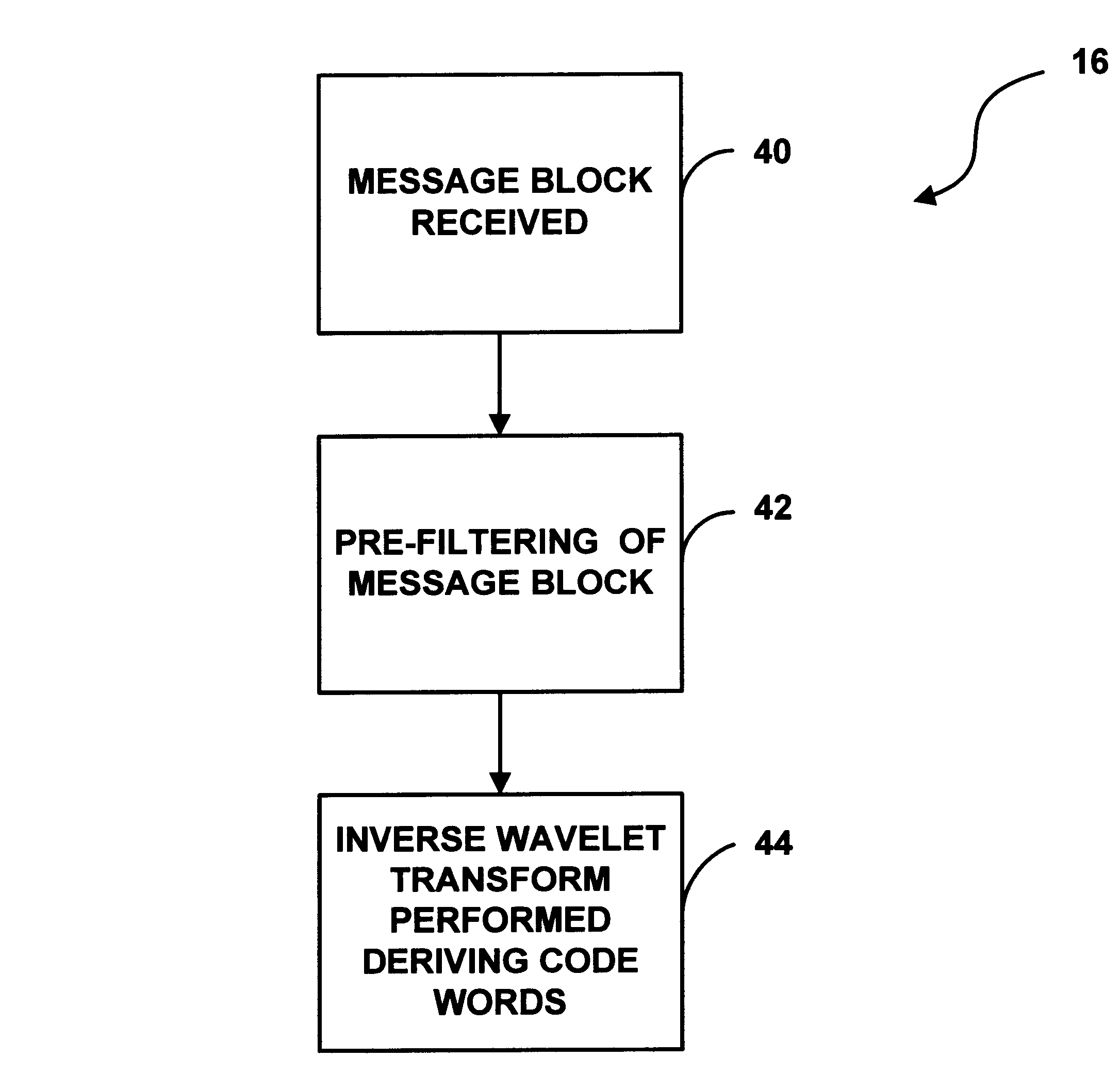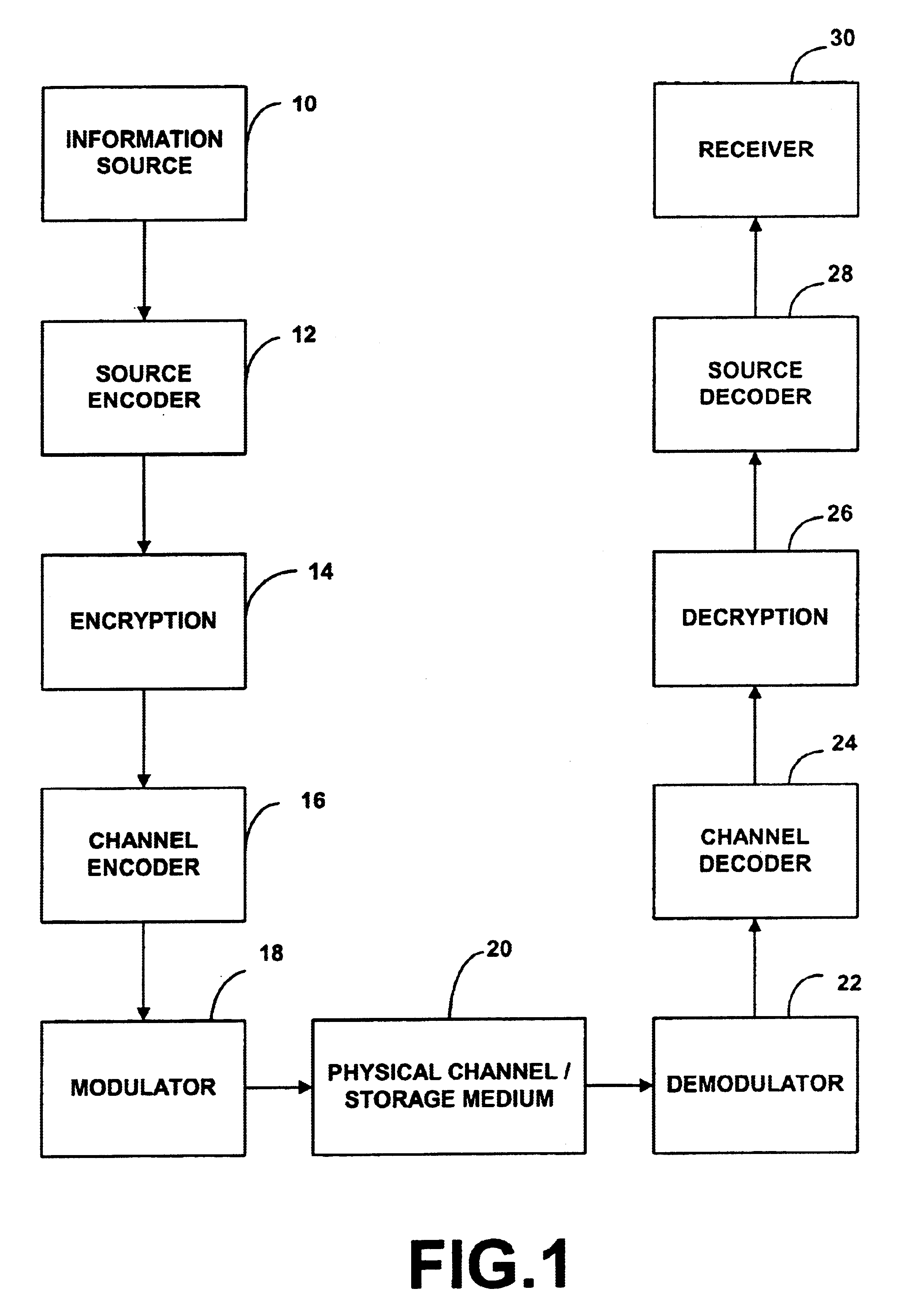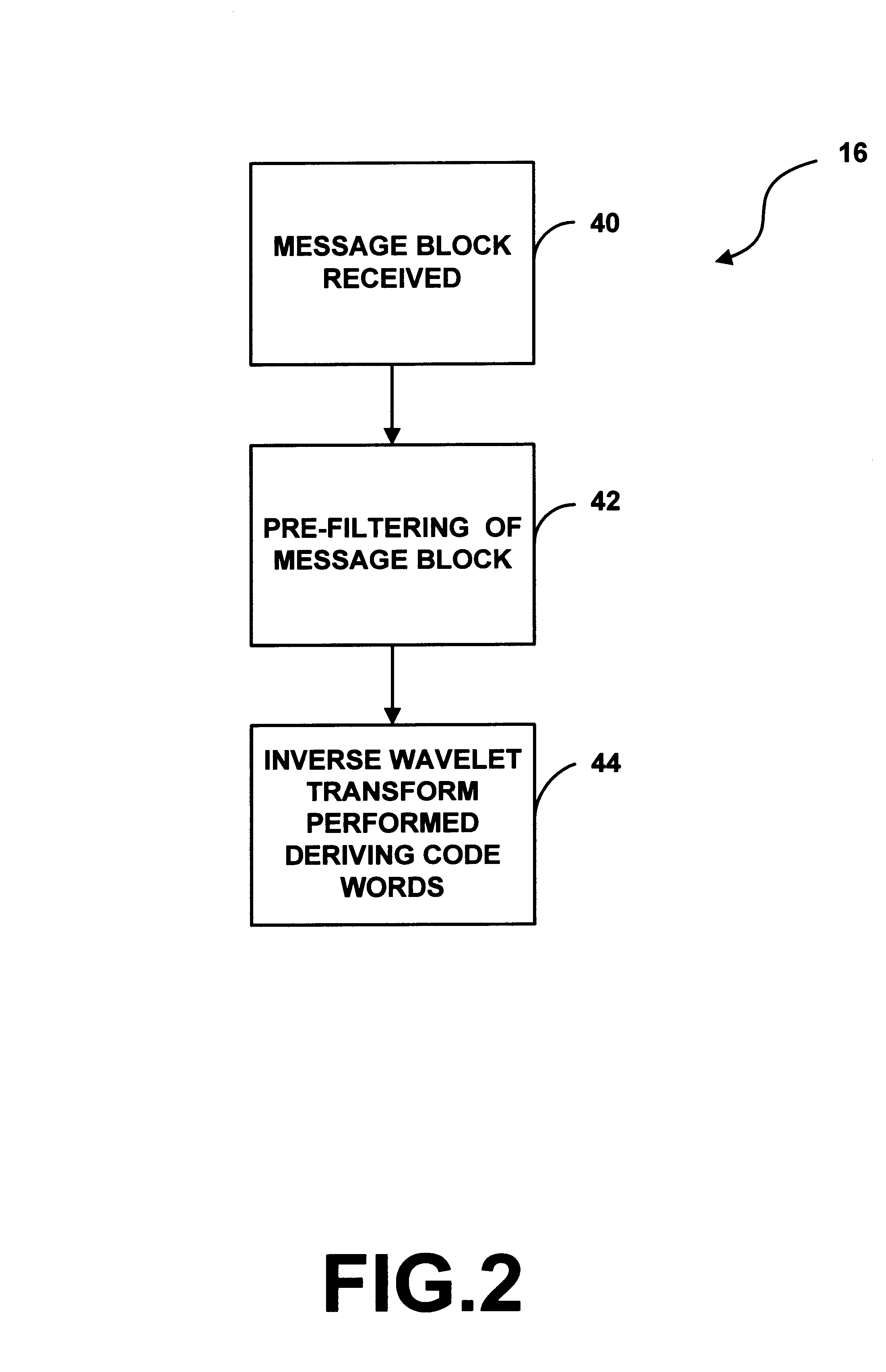System and method for enabling efficient error correction and encryption using wavelet transforms over finite fields
a wavelet transform and wavelet transform technology, applied in the field of signal processing, can solve problems such as errors, and achieve the effects of simple and computationally efficient, quick and efficient, and enhancing the security of the transmission system
- Summary
- Abstract
- Description
- Claims
- Application Information
AI Technical Summary
Benefits of technology
Problems solved by technology
Method used
Image
Examples
first embodiment
[0034]In accordance with the invention the channel encoder 16 receives the message vector from the encryption device 14 in order to create a code word, which is latter transmitted to the modulator 18. As a preliminary matter, throughout the embodiments of the invention all arithmetic is carried out in a specific finite field, GF(p′), where GF denotes a Galois field, p is a prime number and r relates to the type of finite field represented. As an example, if the desired field of use is the binary field, the specific finite field will be GF(2).
[0035]The following description of the embodiments of the invention concerning the channel encoder 16 and channel decoder 24 are described with reference to block code, of which half-rate code is a specific type. While block code is utilized, it should be noted that convolution code may also be provided for by this invention.
[0036]In accordance with FIG. 2, half-rate code is utilized for an accurate description of the encoder and decoder of the ...
second embodiment
[0056]In accordance with the invention, as depicted by FIG. 6 and FIG. 7, FIG. 6 is a functional diagram of the channel encoder 16 for arbitrary rate (N,K) codes, wherein N relates to the code word length and K relates to message block length. Accordingly, a message block is first received by the channel encoder 16 from the encryption device 14 (step 90). A wavelet transform is then performed on the message block (step 92). The output from the wavelet transform is then pre-filtered to give wavelet coefficients (step 94). An inverse wavelet transform is then performed on the wavelet coefficients to derive the code words to be transmitted to the receiver (step 96).
[0057]FIG. 7 is a general block diagram of the channel encoder 16 representing arbitrary rate (N, K) codes, wherein N relates to the code word length and K relates to message block length. Preliminarily, k′ is equal to K / gcd(N,K) where gcd is the greatest common divisor, and N′ is equal to N / gcd(N,K). First, the message bloc...
PUM
 Login to View More
Login to View More Abstract
Description
Claims
Application Information
 Login to View More
Login to View More - R&D
- Intellectual Property
- Life Sciences
- Materials
- Tech Scout
- Unparalleled Data Quality
- Higher Quality Content
- 60% Fewer Hallucinations
Browse by: Latest US Patents, China's latest patents, Technical Efficacy Thesaurus, Application Domain, Technology Topic, Popular Technical Reports.
© 2025 PatSnap. All rights reserved.Legal|Privacy policy|Modern Slavery Act Transparency Statement|Sitemap|About US| Contact US: help@patsnap.com



